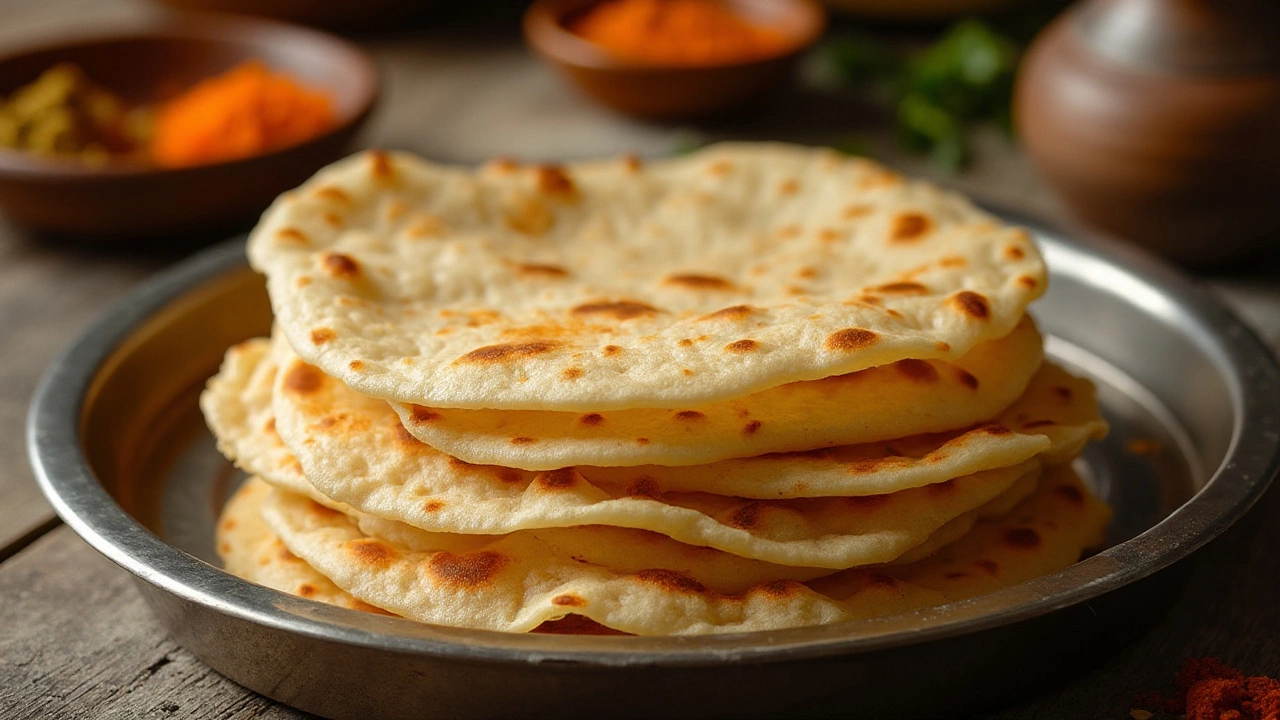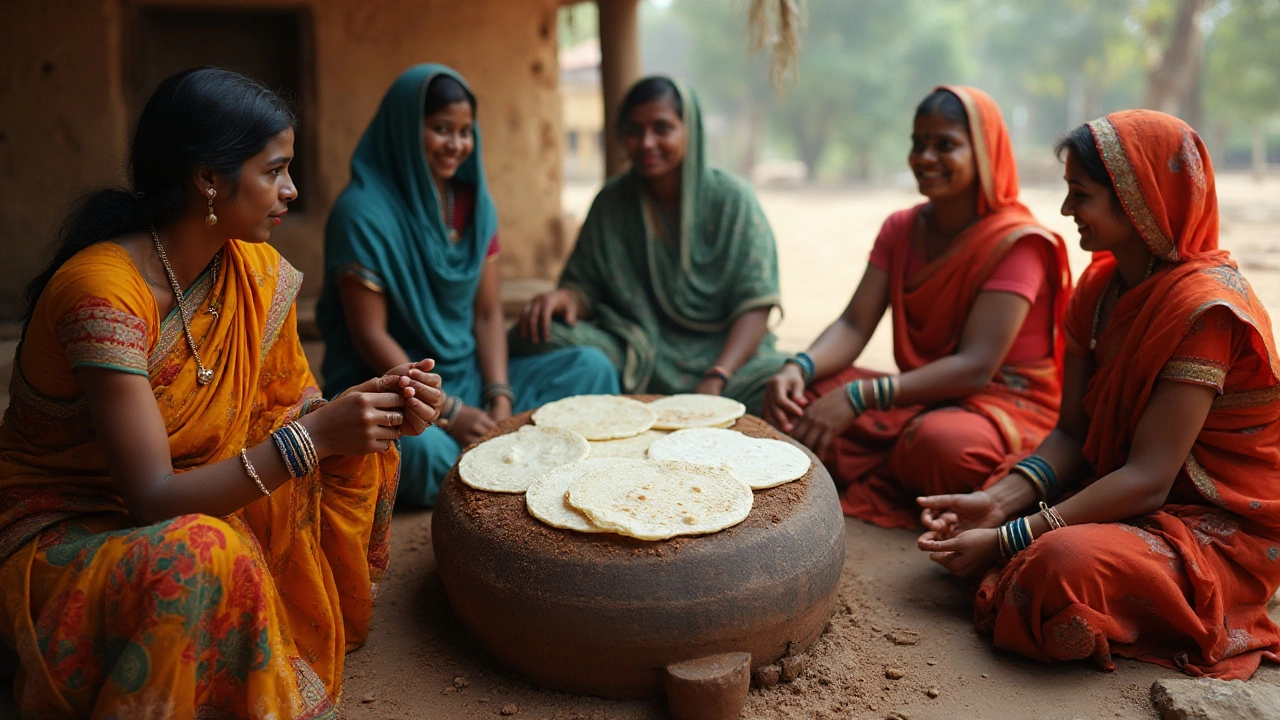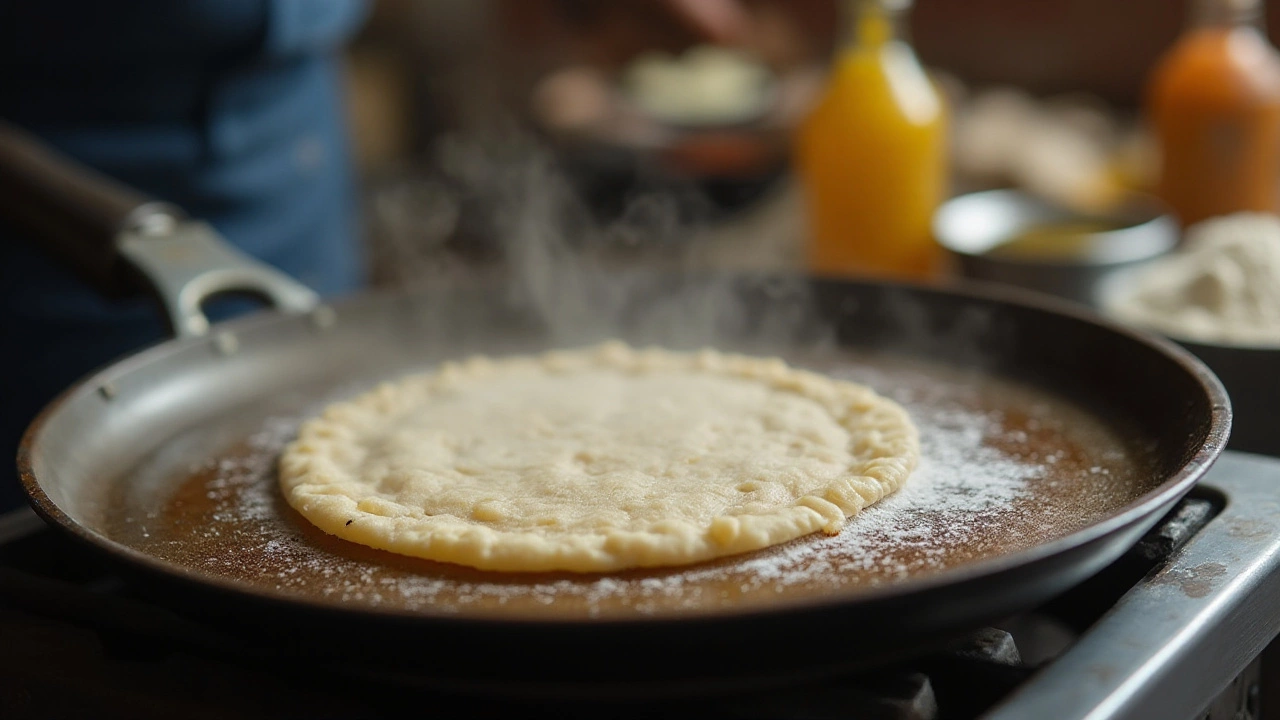In the artful dance of flour and water, roti, a staple in many kitchens around the world, emerges as a beloved flatbread. Many home cooks find themselves on a quest to achieve that coveted round shape, sparking curiosity as to why this matters. Is there magic to the circle, or is it just tradition?
The answer weaves through history, culture, and a little bit of culinary science. While its roundness might appear merely cosmetic, it serves a purpose, balancing out the heat as it puffs up on the griddle. The shape affects cooking time, even distribution of heat, and sometimes the texture of the final product.
But don't fret if creating the perfect circle sometimes feels like squaring a circle. With simple techniques and a focus on skill rather than symmetry, anyone can craft rotis that are just right in their own unique way. Let's delve into the tradition, practicality, and helpful tips that will transform your roti-making journey into a joyous, fulfilling experience.
- The Tradition of Roundness
- Why Shape Matters
- Practical Tips for Making Round Rotis
- Embracing Imperfection
The Tradition of Roundness
In many parts of the world, the art of making roti has been passed down through generations, with each family adding its personal nuances to this time-honored skill. The tradition of crafting a round roti is not merely an exercise in culinary finesse but also a celebration of a circular symmetry that has symbolic significance in many cultures. Historically, roundness has been associated with completeness and wholesomeness. Consider the sun, a circle of life, whose shape is echoed in homes as they replicate it in their daily bread. Many people believe that a round shape represents an ideal state of being, an effort to achieve perfection in the simplest of forms.
A circular roti is not just about aesthetics but tradition—the inherited wisdom acknowledging that the round shape aids in even cooking. The edges of a round roti rise and cook at the same rate, creating a uniformly puffed disk that cooks efficiently on flat griddles, known as tava. Moreover, there's a notable sense of pride and communal heritage in making rotis round. In some regions, it’s seen as the mark of a skilled cook, as the perfectly formed circles impress at family gatherings and community feasts.
"Achieving a perfect round roti is not just an art; it’s a family legacy," says culinary historian Nina Verma.The emphasis on shape can be observed in culinary practices that span borders, from India to Trinidad and beyond, showing a shared understanding of form and function in bread-making.
Beyond these cultural and historical contexts, the practicality of round rotis comes to the forefront, as their shape aligns perfectly with the utensils used to cook them. Circular griddles and rolling pins facilitate the creation of round flatbreads with ease. This traditional method dates back to ancient times when tools were crafted to match the intended shape of these traditional breads. The roti dough, when rolled in a circular motion, stretches evenly, minimizing tears and maintaining its delicate structure. Some cooks incorporate small spinning motions to perfect the circular edge while rolling, a technique passed through generations. The shape plays a role in stacking roti, allowing them to fit more snugly in serving dishes and storage, preserving freshness and warmth during meal times. Enthusiasts often share anecdotes of their first experiences achieving that immaculate roundness, marking it as a rite of passage into adulthood cooking skills.
Cultural narratives surrounding the roundness of flatbreads span far beyond personal kitchens, entering the realm of myth and legend, often seen in celebrations. The shape of the roti is favored in ritual practices symbolizing unity and prosperity. Ancestors believed the earth itself was round, and by making round bread, they were paying homage to the deity of earth, appreciating its bounty. In some communities, the first roti made on new equipment is offered to gods to ensure prosperity and happiness, as an embodiment of the offerings, representing the circle of life and the continuity it provides. Each step involved in its preparation—from kneading to rolling to cooking—is treated with respect for the traditions upheld through generations. This respect is reflected in the careful balance of ingredients and the rhythmic precision of rolling techniques, treasured in every household that cherishes its culinary heritage.

Why Shape Matters
The quest for the perfect round roti often leads home cooks into a fascinating realm of tradition, skill, and even practicality. The round shape of a roti isn't just about aesthetics; it plays a crucial role in how the bread cooks and, ultimately, how it tastes. When a roti is evenly round, it ensures uniform thickness across the dough, which is paramount for even cooking. This uniformity allows the roti to puff up beautifully as it cooks on the griddle, creating that characteristic soft and slightly crispy texture cherished in flatbreads.
Circular rotis are more than a cultural expectation; they also relate to thermal dynamics in cooking. A round shape allows for even heat distribution, preventing the edges from burning while the center remains undercooked. The physics of heat transfer indicates that round shapes help with even cooking, a practical aspect when rotis are cooked quickly over high heat. There's a practical benefit, too—round breads fit perfectly into the circular cookware traditionally used for roti-making, making flipping and turning the bread an easier task.
The New York Times once noted, "The ideal roti is a signature item in South Asian cuisine, marrying simplicity with a challenging precision only mastered with practice."
The pursuit of a round roti also echoes a deeper connection to heritage and cultural pride, a testament to the skills passed down through generations. Each family, each region might have its spin on why and how a roti should be made, but there's a shared understanding that shape impacts the sensory experience of eating. An uneven roti risks uneven textures, where some bites might be too tough, and others too mushy. With practice, the reserved art of rolling the dough into a perfect circle becomes second nature, enhancing the cook's confidence and the meal's quality.
For those who are new to roti-making, it's worth noting that shape impacts the cooking time significantly, adding another layer of complexity to this seemingly simple dish. A round roti offers predictability, easing the cooking process because you know how it will behave under the heat. In many homes, mastering the perfect roundness of a roti is a rite of passage, symbolizing one's journey into culinary maturity. This journey brings about a rewarding sense of mastery, as the satisfaction of crafting a flawless circle taps into our innate appreciation for balance and order.

Practical Tips for Making Round Rotis
Creating the perfect round roti can feel akin to attaining culinary nirvana. While achieving a flawless circular shape might seem elusive at times, it’s not beyond reach. The first step begins with the dough—a foundation that must be right to yield the best results. Use whole wheat flour for a traditional approach, as its fine texture and mild nutty flavor work harmoniously with the roti's purpose. It's recommended to knead the dough with lukewarm water until it becomes soft and pliant, a process that will remind you of molding clay. Allowing it to rest for at least 20 minutes is vital, as resting relaxes the gluten strands, making the dough easier to work with and more willing to stretch into that desired circle.
The rolling process is where many find their efforts going awry. Start with a small ball of dough—a golf ball size usually suffices. Dust it lightly with flour to prevent sticking. Then, using even pressure, roll from the center outwards. It's this consistency in pressure that encourages an even shape. Turning the dough a quarter to a half turn with each stroke helps maintain the circular form. Additionally, control is crucial—excess flour can dry out the dough, while rolling too thin might leave it brittle.
Cooking the roti on a hot griddle, or tawa, is where it all comes together. Maintaining the correct heat is essential—a tawa that's too hot will burn the outside before cooking the inside, whereas a griddle that's too cool will make the roti hard, rather than soft and pliable. Place the roti on the tawa, and let it cook for about 10 seconds before flipping it. Cook it on the second side until small bubbles appear, then flip it again. This time, gently press on the edges to help the roti puff up. The puff is often viewed as the hallmark of a perfect roti, signaling it’s cooked through.
Chef Aarti Sequeira once said, "Making roti is like creating edible art, a craft honed with patience and perfected with practice." Her words echo the sentiments of many seasoned cooks, highlighting the importance of patience and persistent practice in achieving culinary expertise.
For those who feel the pangs of imperfection, remember that beauty lies in its imperfection. Rotis that are slightly oval or carry a hint of character are as delicious as their perfectly round counterparts. This journey is about enjoying the process, experimenting with techniques, and embracing the learning curve that will eventually lead you to the art of making consistently well-shaped rotis at home.

Embracing Imperfection
Let's take a moment to breathe in the beauty of imperfection. The pursuit of the perfectly round roti can be daunting, but sometimes it's in those errant arcs and soft edges that we find true character. Across the world, home cooks know that each roti, much like its maker, is unique. Every dough circle tells a story of hands that crafted it and the heart that nourished those hands. Rotis that aren’t perfectly round still carry the love and care invested in them, and embracing these quirks can bring a warmth that resonates beyond the kitchen.
Many cultures view life's slight irregularities with affection, understanding that perfection isn’t as inviting as authenticity. Embracing these nuances does not only apply to roti, but to gastronomy as a whole. Renowned chefs often encourage stepping away from the pursuit of perfection. A slightly misshapen, heart-made roti can bring a smile of recognition and warmth to those it sustains, reminding them of family meals or long-lost traditions. It’s the taste, aroma, and texture that ultimately matter, symbolizing nourishment for both body and soul.
Let's consider a little historical wisdom too. Ancient mystics and poets mused about the significance of circles — unending and boundless. Yet, they also appreciated the chaos and unpredictability of life's 'imperfect' moments. A familiar proverb from the East suggests, "Perfection is a road, not a destination." It's an ode to the journey, respectful of the little variances that make life and cooking vibrant and full of growth.
Moreover, in the quest for round rotis, there is ample room for experimentation and creativity. Dough consistency, griddle temperature, and mixing techniques all play roles in shaping the outcome. Through trial and error, each cook invents a little strategy of their own. Every attempt offers a richer experience, bringing joy and sometimes laughter when a heart or a map of unknown lands appears instead of a symmetrical circle.
"The cooking of food is an intimate act, a venerable language that everyone speaks. Cherish the imperfections, for it is in them that your journey is narrated most truthfully." — Michael Pollan
For those still striving for that symmetry, remember: a journey to mastery is spurred by practice and a sense of fun. In time, and with a little patience, even the most untrained hands can deliver a set of decent-looking round roti. The key is enjoying the process and valuing the imperfections as much as the results. Observing and feeling, all while accepting the quirks as part of a learned skill can transform the act into a peaceful kitchen meditation.
